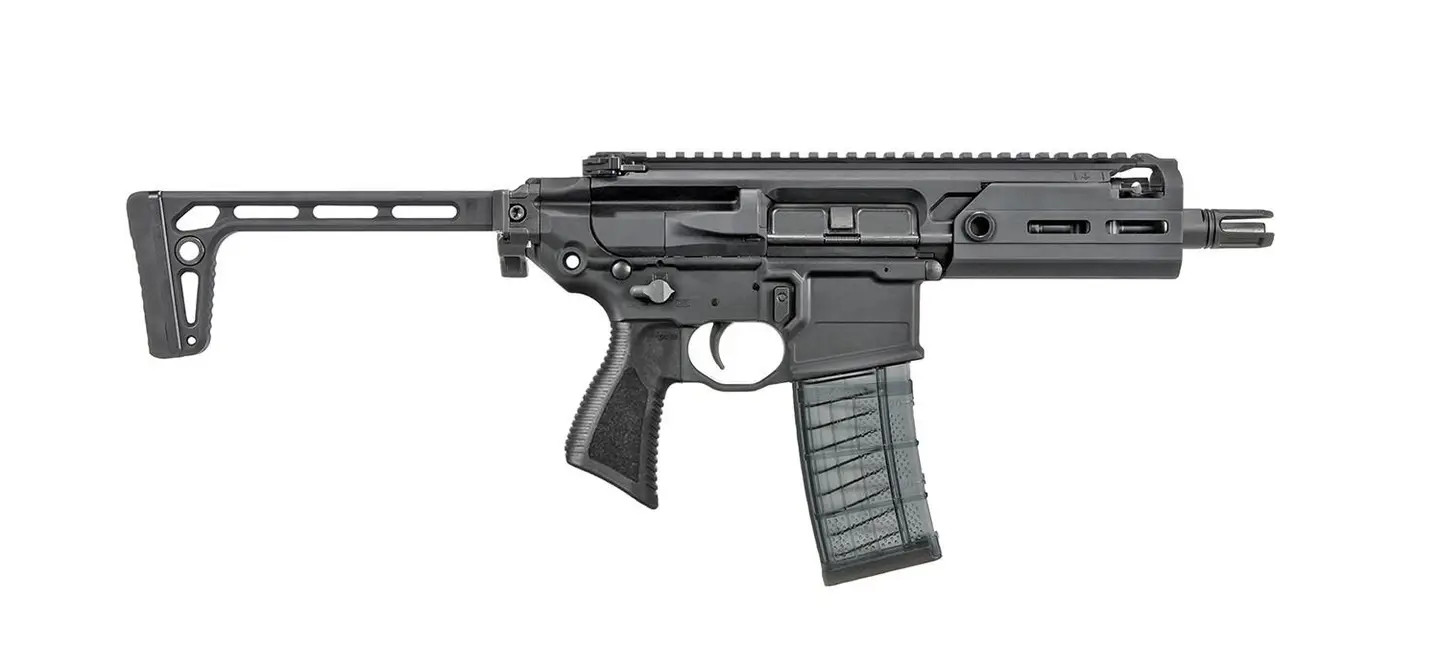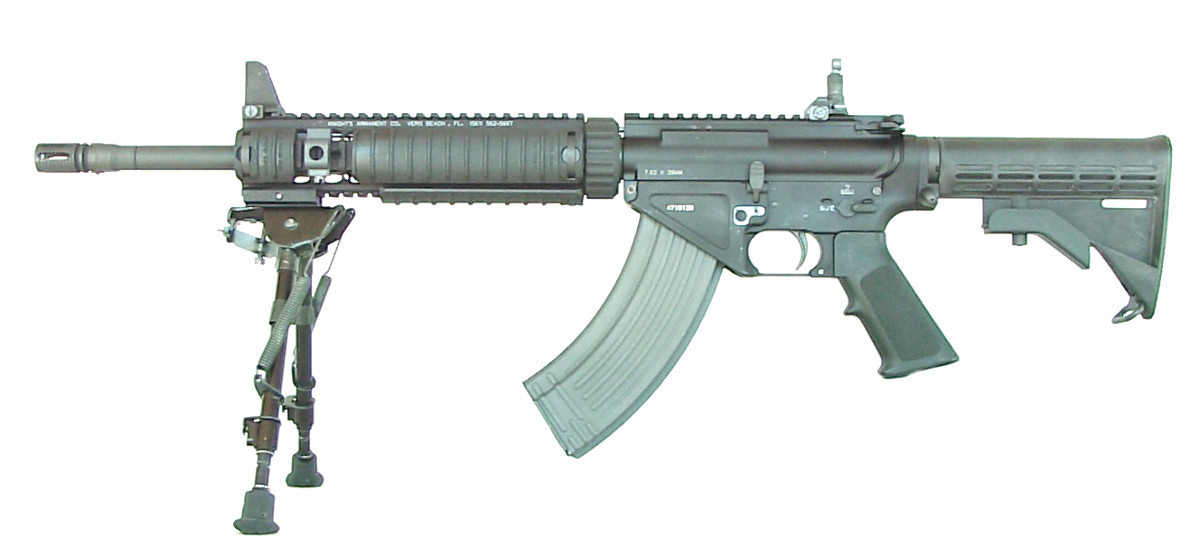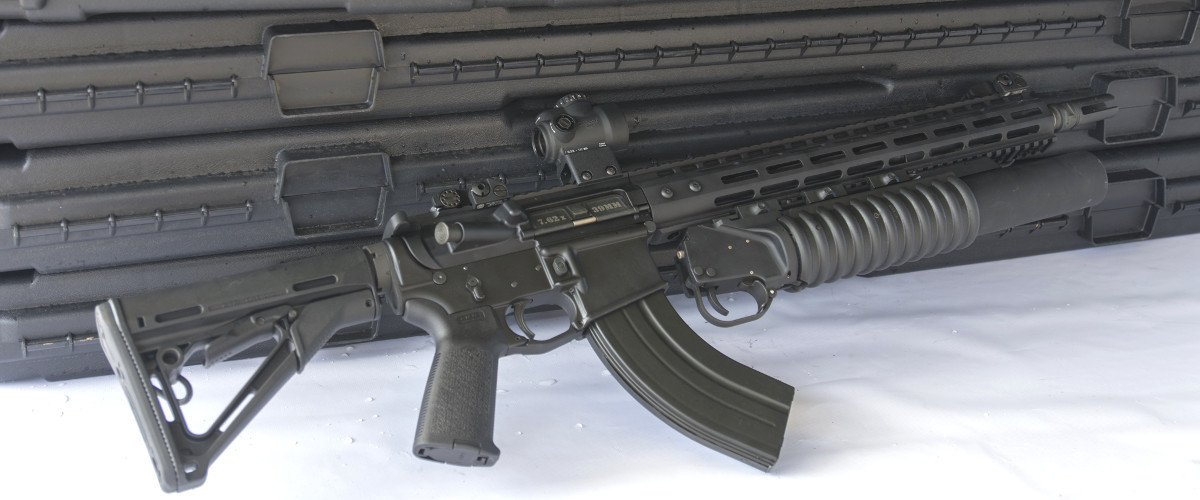American special operators who are issued new short-barrel Sig Sauer Rattler personal defense weapons, or PDWs, may eventually be able to fire Soviet-designed 7.62x39mm ammunition from those guns. U.S. Special Operations Command says has an interest in buying 7.62x39mm caliber conversion kits for the weapons, which are already set to be able to be configured to fire .300 Blackout cartridges or 5.56x45mm rounds.
U.S. Special Operations Command’s (SOCOM) Special Operations Forces Acquisition, Technology, and Logistics (SOF AT&L) Center first issued the contracting notice regarding the 7.62x39mm conversion kits on October 28. SOCOM had announced in May that it planned to award Sig Sauer a contract to supply new Reduced Signature Assault Rifles (RSAR)/Personal Defense Weapons (PDW) and that deal was finalized in September.
“Currently, the RSAR/PDW system is chambered in both the 5.56 NATO and .300 Black Out calibers,” the contracting notice says. “Due to developing requirements, USSOCOM is seeking 7.62x39mm upper receiver caliber conversion kits that are compatible with the SIG SAUER Rattler Lower Receiver.”

At the time of writing, the SOF AT&L notice does not provide any specific details about the “developing requirements” in question. The War Zone has reached out to SOCOM for more information.
Sig Sauer’s RSAR/PDW for SOCOM is a modified version of the company’s ultra-compact Rattler rifle. The Rattler is itself based on Sig Sauer’s MCX rifle design, which is a derivative of the AR-15/M16 pattern that notably used a gas piston operating system versus a so-called direct impingement one that uses siphoned-off propellant gas from firing to directly cycle the main action. Since gas piston systems do not blow propellant gas, and the particulate matter it carries, into the inner action of the gun, they inherently require less cleaning and offer significant benefits when it comes to reliability as a result.
The MCX series has been growing in overall popularity itself in recent years. In April, the U.S. Army announced that it had selected Sig Sauer as the winner of its Next-Generation Squad Weapons competition. The company pitch consisted of an MCX rifle variant and an advanced belt-fed machine gun, now known as the XM5 and XM250, respectively, both chambered in a new 6.8mm round. These weapons are currently slated to replace most, if not all of the Army’s M4/M4A1 carbines, as well as a significant portion of its M249 Squad Automatic Weapons, as you can read more about here.

The SOF AT&L notice indicates that the Rattler versions that U.S. special operators will be receiving will come in the form of complete guns, as well as conversion kits that will be mated to modified lower receivers from donor M4A1 carbines. The M4A1 is the predominant standard service weapon in the U.S. military and other modified versions of those guns are in use in the special operations community, in addition to more specialized rifles and carbines.
Exactly how SOCOM’s RSAR/PDWs may differ from the standard Rattler configuration that Sig Sauer offers commercially is not entirely clear. The commercial standard Rattlers have 5.5-inch barrels, and overall lengths of 23 inches and 16 inches, depending on whether the skeleton PDW-style stock is extended or folded along the side, according to the company’s website. They also feature a standard accessory rail on top and a very short handguard with accessory attachment points utilizing M-LOK system.

SOF AT&L’s contracting notice says that the 7.62x39mm conversion kit can have a barrel up to 7.75 inches long and an overall length with the stock folded of 18.4 inches, but it’s unclear if also this reflects the basic dimensions of the RSAR/PDW variant SOCOM is buying. The notice adds that SOCOM wants the complete conversion kit to also include a 7.62mm-specific SLH-series sound suppressor from Sig Sauer.

As already noted, the factory standard Rattlers are available in either 5.56x45mm or .300 Blackout. The Advanced Armament Corporation actually first developed the latter cartridge, which already has a strong following in the U.S. special operations community, in the late 2000s in part to provide ballistics similar to the 7.62x39mm round when fired from guns with very short barrels. A specialized subsonic cartridge was also developed specifically for use in weapons equipped with suppressors in close-quarters combat. Other manufacturers now offer other versions of .300 Blackout with different bullet types and performance profiles.
The ability to reconfigure Sig Sauer RSAR/PDWs to fire either of these standard ammunition types makes good sense for SOCOM. It allows for the use of much more readily available 5.56x45mm ammunition as necessary, especially during routine general training activities where the exact ballistic performance of the .300 Blackout is not necessarily required. The .300 Blackout round also notably has the same case head size and cartridge body taper as 5.56x45mm, allowing it to be loaded reliably in existing magazines and reducing the total number of parts required that need to be changed to switch between the two calibers. In most cases, a conversion between these two ammunition types requires little more than a barrel change.

While we don’t know why SOCOM is now interested in potentially adding 7.62x39mm to the caliber options for the RSAR/PDW, this requirement has come up in the past as part of other U.S. special operations small arms programs, notably the Special Operations Forces Combat Rifle project, or SCR, in early 2000s. Knight’s Armament Company (KAC) went so far as to develop an AR-15/M16 derivative called the SR-47 that not only fired the Soviet-designed rounds, but could use actual AK-47/AKM magazines.

The underlying theory behind having the 7.62x39mm caliber option for SCR was that it would be a boon for U.S. special operations forces operating independently in countries where that ammunition was prevalent, or working side-by-side with or training local partner forces armed with guns like the AKM. SOCOM maintains stocks of AK-type rifles, among other foreign weapons, to meet these kinds of mission requirements, but they of course have no commonality when it comes to handling, manual of arms, or sustainment with standard U.S. service weapons. As such, they require operators to have at least some degree of specialized familiarization training, as well as non-standard logistics chains.
In the end, the SCR effort morphed into the Special Operations Forces Combat Assault Rifle program, or SCAR, which dropped the 7.62x39mm requirement. Belgian gunmaker FN Herstal eventually won the SCAR contract with a clean-sheet design.
Other manufacturers have offered AR-15/M16 derivatives chambered in 7.62x39mm over the years. This includes Colt’s Model CK901, which also used standard AK-47/AKM magazines, and was reportedly developed specifically for the armed forces of Yemen before that country’s government collapsed in 2014.

Of course, a design with a modified magazine well wouldn’t meet SOF AT&L’s state requirements for the 7.62x39mm conversion kit, which it wants to be able to mate to existing Rattler lower receivers. There have been other 7.62x39mm AR-15/M16 derivatives that use minimally modified lower receivers, but require specialized magazines. This includes older Colt models, as well as the WAC-47, a design that was developed in the United States as a potential new service rifle for the Ukrainian armed forces in the late 2010s.

Regardless, for the RSAR/PDW, being able to use 7.62x39mm ammunition could make good sense for many of the same reasons why that caliber was initially included in the SCR requirements. The guns are, at least in part, intended to give American special operators significant, but discreet firepower when operating covertly or clandestinely, or while otherwise keeping a low profile in sensitive locales where even a rudimentary supply chain may not be assured. Being able to use locally available ammunition, or share ammunition with local partner forces, could be extremely useful in these kinds of circumstances. Using the Soviet-designed rounds might offer some amount of plausible deniability as to the direct involvement of American forces in situations where that is desirable, as well.
The unspecified “development requirements” mentioned in the SOF AT&L contracting notice could well reflect the current security situation in Europe, which is currently inseparably linked to Russia’s war on Ukraine. The 7.62x39mm caliber is of course being widely employed on both sides of that conflict. Reserve and volunteer elements in other countries along Russia’s western borders, a number of which are now NATO members, could still end up using weapons that fire that ammunition in a future high-end conflict in the region.
Beyond this, of course, 7.62x39mm continues to be in widespread use around the world, including in the Middle East, Africa, and Asia. The latter region is increasingly the core focus of U.S. military planning, to include new special operations concepts of operation that could involve covert action in cooperation with local security forces, based on the growing challenges that China poses as a result of its expanding military prowess and geopolitical political influence.
It is also important to remember that this contracting notice from SOF AT&L does not presently reflect a hard commitment to buy 7.62x39mm caliber conversion kits.
At the same time, SOCOM clearly at least has emerging operational scenarios where American special operators might benefit from being armed with RSAR/PDWs chambered to fire ubiquitous 7.62x39mm ammunition.
Update 11/4/22:
U.S. Special Operations Command has now responded to our queries for more information about the “developing requirements” that prompted this contracting notice.
“U.S. Special Operations units operate with partner forces globally,” a SOCOM spokesperson told The War Zone. “The 7.62×39 conversion kit barrel is an attempt to address the requirement to be more interoperable with partner forces which may use that cartridge in their primary assault weapons.”
Contact the author: joe@thedrive.com
